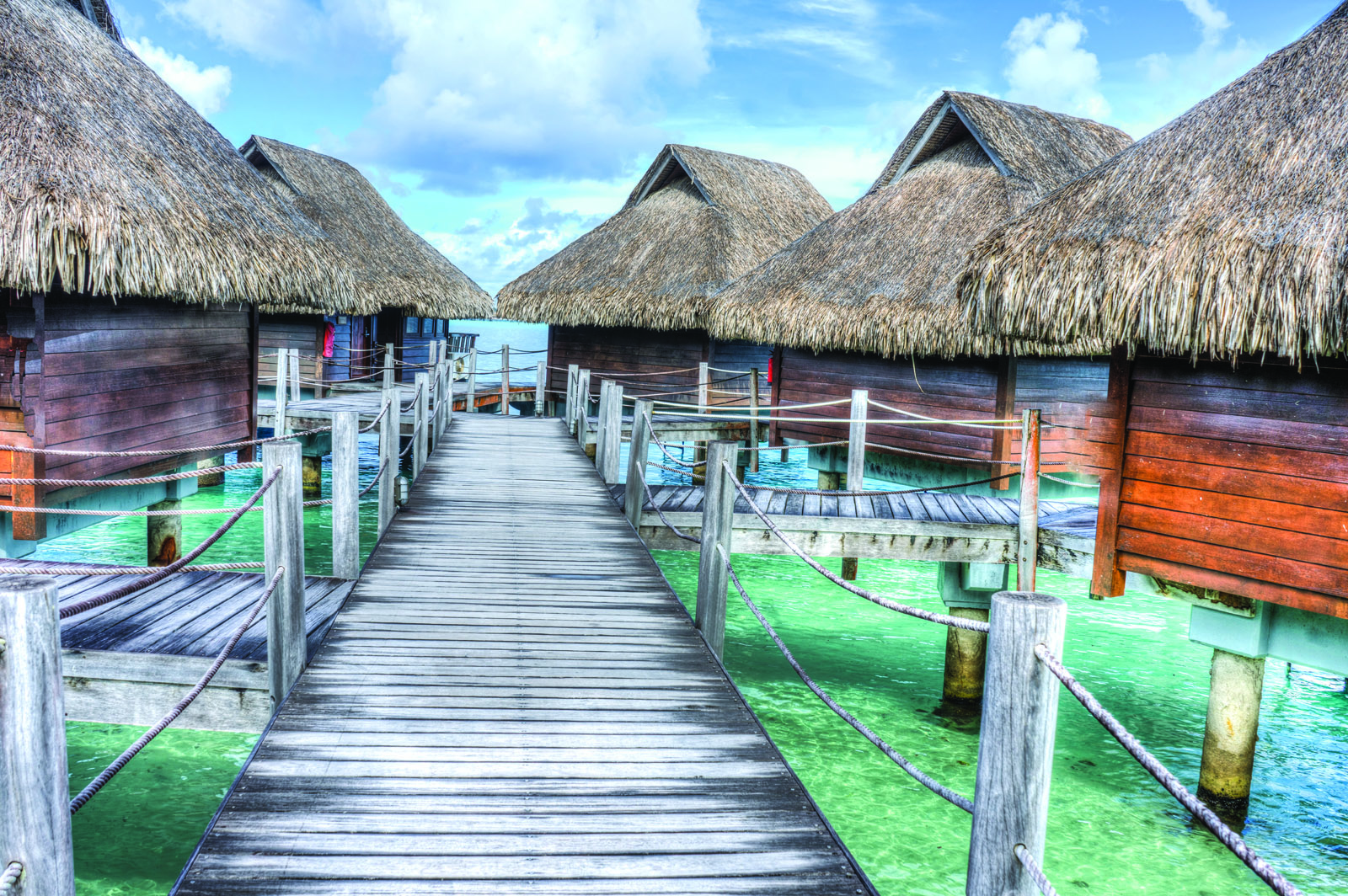Mexico’s Caribbean coast boasts beautiful beaches, fascinating culture and ancient archeological sites
BY LA CARMINA
The snow is getting alarmingly deep. The wind is howling outside. And the furnace is on full-blast. Could there be a better time than now to escape to a place that is warm, inviting and culturally rich?
Perhaps it’s time to pack your swimsuit for an escape to the Riviera Maya.
Located in Mexico’s Yucatan peninsula, this 120-kilometre Caribbean coastline is home to Tulum, Playa del Carmen, Akumal, and other charming beach towns. If you love both relaxing by the ocean and exploring local culture and archeology, this is your ideal tropical getaway.
I booked an inexpensive direct flight and traveled in early January, leaving behind a heavy snowfall. Riviera Maya’s hot, dry season begins in November and ends in February, making winter the best time to visit.
To avoid the tourist scene, I stayed at the adult-only El Dorado Maroma. As soon as I saw the resort’s thatched over-water huts on a stretch of quiet beach, I knew I was in for a relaxing break from the crowds.
If you prefer a larger five-star resort, Iberostar Grand Hotel Paraiso will pamper you with award-winning restaurants and spas. Nature lovers should consider Azulik Resort and Maya Spa near the town of the Tulum, where the wood villas have 360-degree views of jungle and the Caribbean Sea, offering visitors the experience of living luxuriously in the wild.
If spending time in the sun is a priority, don’t miss out on the ancient Mayan ruins in the region. Some of the oldest excavated sites date back 4,000 years.
To get around, travellers typically rent a car or take public transportation such as “collectivo” buses. I hired a driver and guide from local concierge company, Loco Gringo, so I could easily visit several sites in a day.
My guide, Paulina, took me to Chichen Itza, site of an iconic step pyramid and ancient observatory. Here, I learned about Mayan astrology and human sacrifice. We then drove to the lesser-known archaeological sites Ek Balam and Coba. Wandering through the stone temples without other tourists around, I felt transported back in time.
Next, Paulina suggested a tour of the folk-art museum, Casa de Los Venados in Valladolid, an inland town established by Spanish colonialists atop an older Mayan settlement, which, which was dismantled to provide the conquerors with building materials.
I rode in a yellow hacienda there, decorated with more than 3,000 Mexican works: grinning sugar skulls, colourful deer, and a mosaic of images of painter Frida Kahlo. After walking through the old town, we stopped at a cemetery filled with flowers and rainbow-coloured tombstones.
Back at the resort, I honoured the sun-worshipping Mayans by spending a day relaxing on public beaches. Locals agree that Maroma is the most picturesque, with its soft white sands and clear waters. Xpu-Ha has a charming mile-long stretch of coast, perfect for a long stroll followed by swimming and snorkeling.
Riviera Maya is also famous for its cenotes, or subterranean swimming holes. Dive into Cenote Maya near the Ek Balam ruins, or Ik Kil near Chichen Itza. When you’re floating and looking up at the shaft of light, it’s easy to understand why these wells were sacred to the Mayans.
I wanted to try authentic Mexican food, so I went to Aguachiles in Playa del Carmen. The namesake dish is an outstanding Sinaloa ceviche, made from raw shrimp cured in lime juice and spiced with chilies. Aguachiles’s fresh seafood tacos and tostadas were also well-priced, and hit the spot.
Kay Walten, founder of Riviera Maya vacation company Loco Gringo, encouraged me to eat at El Meson de Marques in Valladolid. “Here you can enjoy terrific Yucatecan food,” she told me. “Our favorite regional dishes are cochinita pibil (slow-roasted pork), sopa de lima (poultry lime soup), and longaniza (sausage similar to chorizo). Their special caldo de marques, a hearty soup with avocado, chicken and spice, is a winner.” Kay also raved about El Pollo Bronco, “the best Mexican grilled chicken place in Tulum.” This unassuming late-night joint serves addictive drumsticks with guajillo chili powder and a side of salsa.
I couldn’t leave without a few souvenirs from local boutiques. On Coba Road, artisans display impressive handmade dreamcatchers and plaster sculptures. My favorite vendor sold organic Melipona honey from stingless Mexican bees, fashioned into candles and soaps.
You can also find unique gifts at MexicArte, located in Akumal and Tulum. Friendly owner Nayeli sources crafts and jewelry from various regions of Mexico, and gives proceeds directly to the artists. I also recommend Siete Detalles, a small store packed with handicrafts, pewter and glass. This is one of the only shops in Playa del Carmen with authentic talavera, a clay pottery tradition that dates back to the 16th century.
A vacation in Riviera Maya is especially delightful during Canada’s coldest months, when you’re craving a fix of sunshine and seafood. With easy flight access and plenty of attractions, the land of the Maya is just the ticket to heat up a long winter.
If You Go, Sidebar:
Getting There: There are direct flights to Cancun on most days of the week, from major Canadian cities including Vancouver, Calgary, Edmonton, Toronto and Montreal. These airlines include InterJet, WestJet, Sunwing, Air Canada and Air Transat. Prices range from $390 to $800, with a flight time of between four and six hours, depending on the city of origin.
Ground Travel: If you’re staying at a Riviera Maya resort, the staff can usually provide a shuttle transfer from Cancun International Airport. Travellers may also rent a car and drive south down Carretera Federal 307, a well-maintained highway that follows the coastline; Playa del Carmen is a 45-minute drive from the airport.
Accommodation: All-inclusive packages are excellent value, beginning at around $190 a night at a four-star resort. A luxurious, ocean-front villa is generally $500 and up.





























